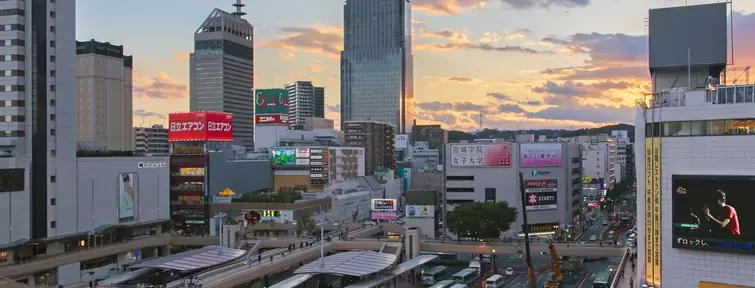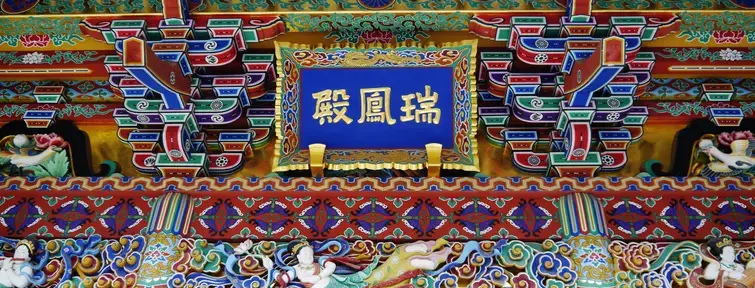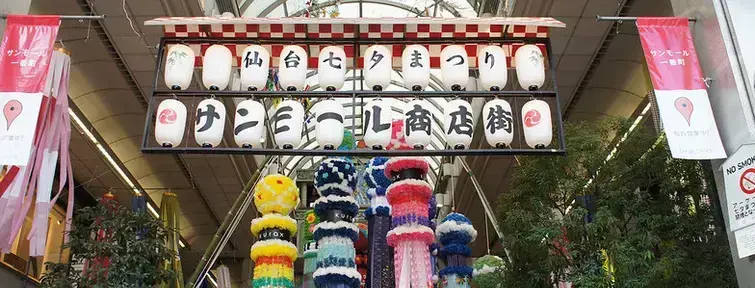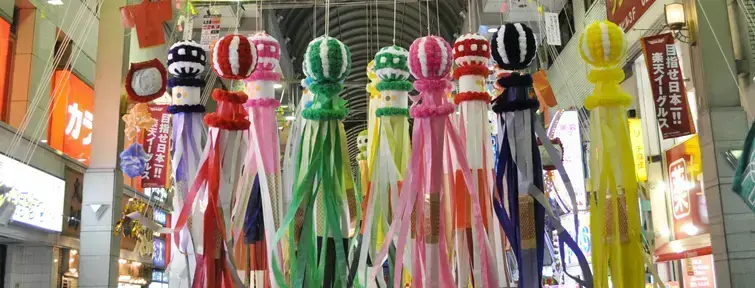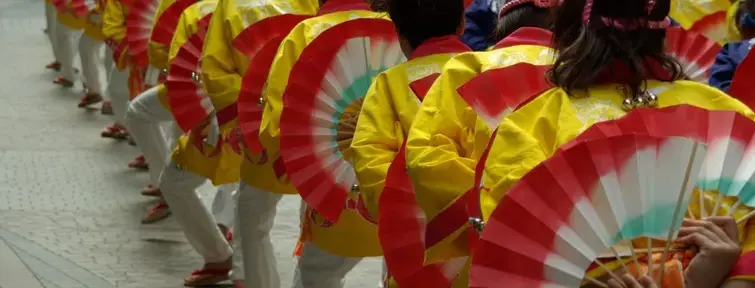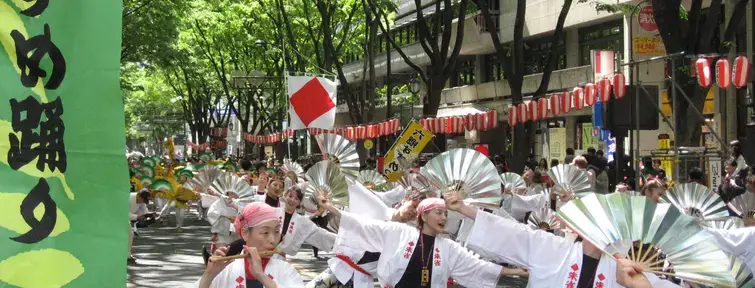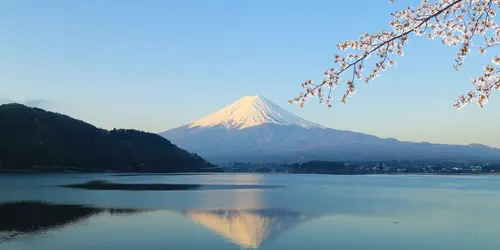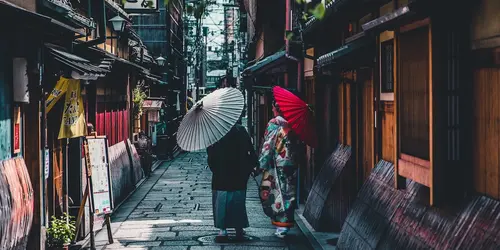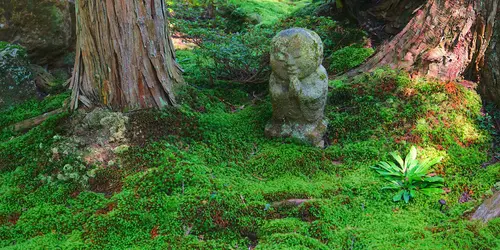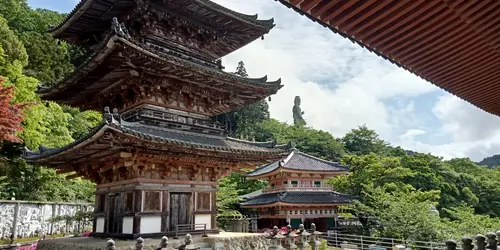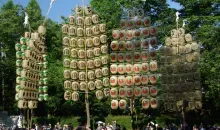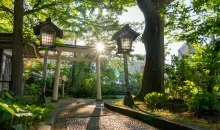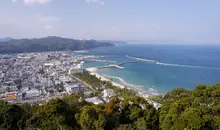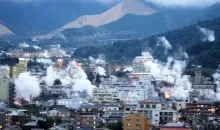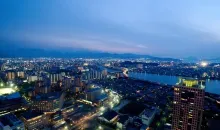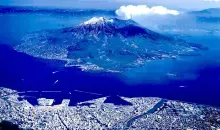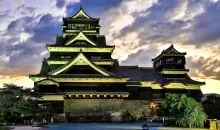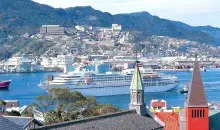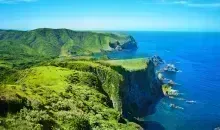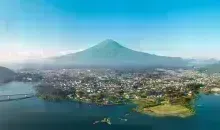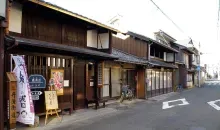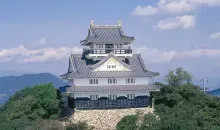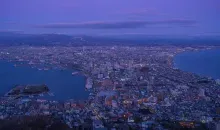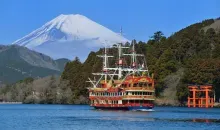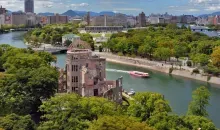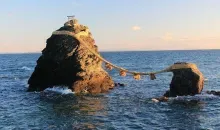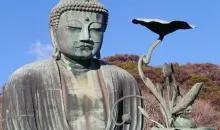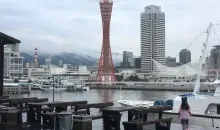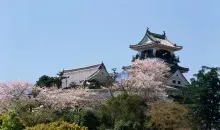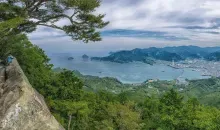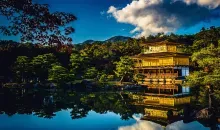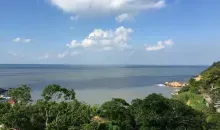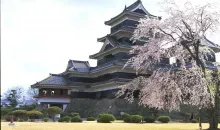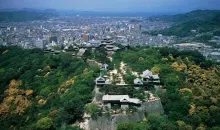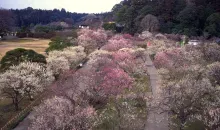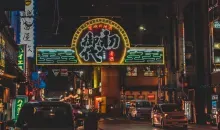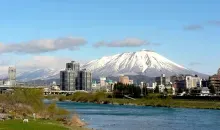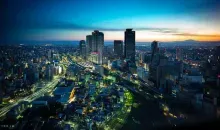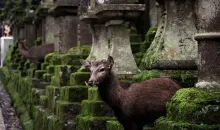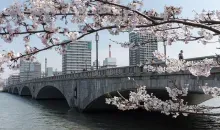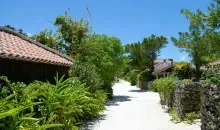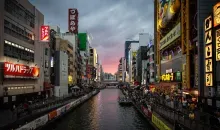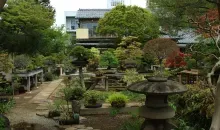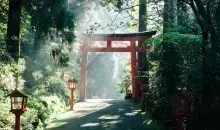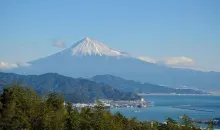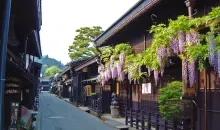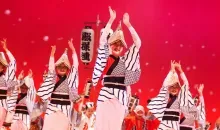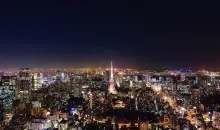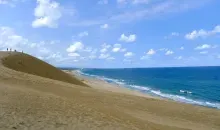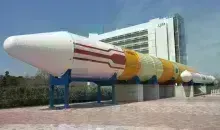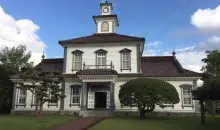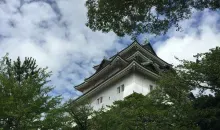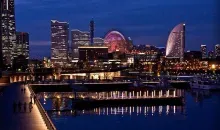Sendai
- Published on : 27/06/2025
- by : G.L. / I.D.O.
- Youtube
Local Time 11:58
Symbol : cloudy_rainy
Temp : 33.1°C
Date : Today
Symbol : sunny_cloudy
Temp : 32.3°C
Date : Tomorrow
Symbol : cloudy
Temp : 30.7°C
Date : Sunday
Symbol : sunny
Temp : 33.1°C
Date : Monday
Local Time 11:58
Symbol : cloudy_rainy
Temp : 33.1°C
Date : Today
Symbol : sunny_cloudy
Temp : 32.3°C
Date : Tomorrow
Symbol : cloudy
Temp : 30.7°C
Date : Sunday
Symbol : sunny
Temp : 33.1°C
Date : Monday
The capital of Tôhoku and a must-see city in northern Japan
With around one million citizens, Sendai is the largest city in Tohoku (the northeastern region of Honshu Island). Sendai is an old, historical castle town developed by the samurai warlord Masamune Date. It is one of Japan's fastest-growing and most charming cities.
Sendai - A Medieval History Linked to Lord Masamune Date
His helmet decorated with a half-moon, his black horse, his castle: people in Sendai is familiar Date Masamune (1567-1636), the great lord who made this small port town a prosperous and open city, from its founding in 1604. Renowned as angry and vengeful, Masamune was also a connoisseur of Noh theater and calligraphy. The history and influence of the "One-Eyed Dragon" (the nickname of Masamune, who lost an eye as a child) can be discovered to the west of Sendai, nestled on Kyogamine Hill.
The ancient castle, Aobajô, conceals beautiful period pieces behind its formidable watchtower and offers a spectacular view in addition to ancient ruins. Furthermore, there is the Gokoku Shrine, which is connected to the Yasukuni-jinja shrine in Tokyo, which has a small museum dedicated to the military history of modern Japan.
Things to see and do in Sendai
Sendai is blessed with a cooler climate during Japan's notoriously hot and humid summers, making it a great place for visitors to stay for an adventure in Japan's north.
Sendai is the gateway to the Tohoku region of northern Japan with the shinkansen connections to Tokyo to the south and onwards to Aomori and Akita further north.
Things to see and do in and around Sendai include the Sendai City Museum; Masamune's elaborate mausoleum - Zuihoden; Sendai Castle (Aoba Castle) ruins, the sculpture-lined Jozenji street, and the scenic island-dotted bay at Matsushima on the coast as well as the beautiful Zao Onsen in the nearby mountains. Both offer hot-springs & spectacular views. Shiroishi Castle is around 50 minutes by train to the south.
Miyagi Stadium in Rifu was a World Cup 2002 venue and is a planned venue for 2020 Olympic football (soccer).
Sendai Attractions
Zuihoden is the mausoleum of the powerful daimyo, Masamune Date, (pronounced Dah-teh, 1567-1636, known as the "One-Eyed Dragon"). Zuihoden is reminiscent of the Tokugawa mausoleum in Nikko in its elaborate beauty.
The original, ornate 17th-century buildings were destroyed in World War II but completely restored in 1979.
Set at the top of a flight of steep stone steps within a forest, the site also includes the mausoleums of Date Tadamune and Date Tsunamune, the second and third successors to the patriarch of the Date clan.
Sendai Castle, aka Aoba-jo, dated from 1602 but nothing remains today of the buildings except for the impressive stone walls and a reconstructed watchtower. The castle grounds do have fine views of the city and an iconic statue of Masamune on a horseback. The Aoba Castle Exhibition Hall has computer-generated displays of the castle resembling in its glory days.
The Toshogu Shrine near Toshogu Station on the JR Senzan Line was built by Date Tadamune to honor Ieyasu Tokugawa, the founder of the Tokugawa shogunate, and his great ally.
Rinno-ji Temple has a three story pagoda and a strolling garden, which are the highlights of the visit here. Rinnoji was founded in the 1440s but moved to its present location in the early 17th century. The temple is a family temple of the Date clan.
Osaki Hachimangu Shrine was established by Date Masamune in 1607 and is designated as a National Treasure. The Main Hall is decorated using a distinctive black lacquer and gold leaf. Hachiman is considered a deity of warfare.
Komyoji Temple near Kita-Sendai Station on the Senzan Line contains the grave of Tsunenaga Hasekura (1571-1622), who was Masamune Date's ambassador to Mexico and Spain. Hasekura sailed in the Date Maru to Acapulco via Luzon in The Philippines in 1613 and went on to visit Spain, Switzerland, and Rome. Hasekura's vessel of 150-180 men was one of the first Japanese ships to cross the Pacific. Hasekura returned to Japan in 1620 having been baptized as Christian, but by this time Christianity was out of favor with the Tokugawa regime, and Hasekura's son (the head priest of Komyoji) and some of his servants were executed for their faith.
Northwest of Sendai city center adjacent to the Best Western Hotel Sendai and the Sendai Hills Golf Club is a modern statue of Kannon (Goddess of Mercy) standing 100m tall.
Ryuun-in Temple, 5km northwest of Sendai Station contains the tomb of Shihei Hayashi (1738-1793), a prominent military scholar whose writings helped to inspire the movement that led to the end of the Shogunate (Meiji Restoration) in 1867. There is a statue of Hayashi in Kotodai Park and a plaque commemorating his life in Aoba Castle.
Nishi Park or Sakuragaoka Park was formerly the residential quarters of the samurai retainers of the Date clan. Tsutsujigaoka Park is known for its ancient cherry trees, some approaching 300 years of age.
Access to Sendai
By Air
Flight connections from Tokyo, Osaka, Sapporo, Nagoya, Fukuoka, Beijing, Seoul, and other Asian destinations. Sendai Airport is 18km south of the city center and connected by bus (40 min) and train (17 min by express service).
By Train
From Tokyo JR Tohoku Shinkansen super-express to Sendai Station (1 hr 36 min to 2 hr 32 min) is a frequent service running on to Morioka. Sendai is also connected by train with Yamagata, Matsushima, and Sendai Airport.
By Bus
There are daily bus services to Shinjuku in Tokyo and Niigata and night buses to Tokyo, Kyoto, Kanazawa, and Osaka. Sendai is the major hub for buses in the Tohoku region with departures to most destinations including Morioka, Akita, Aomori, and Hachinohe.
Book highway buses to Sendai from Tokyo including the routes Hamamatsucho-Shinjuku-Sendai (day) and Shinjuku-Akihabara-Sendai (night). Book the Sendai to Shinjuku night bus leaving Sendai at 12.10am and arriving in Shinjuku at 5.35am.
By Ferry
There are overnight ferry services to Nagoya and Tomakomai on Hokkaido from Sendai-ko (local JR train to Tagajo station on the Senseki Line then a taxi, bus (15-20 min walk), or a bus from Sendai Station. The ferries are operated by Taiheiyo Ferry company.
Both Sendai Airport and Sendai Port were damaged in the March 2011 earthquake and subsequent tsunami but are both now fully repaired and functional.
Visit around Sendai
Sendai is a great place to stay to explore the rest of Miyagi Prefecture and to head north into Tohoku.
- Picturesque Matsushima Bay and Oku-Matsushima, the peninsula that separates Matsushima Bay from Ishinomaki Bay, is an easy day or half-day excursion from Sendai. Oku-Matsushima is best known for its imposing craggy Sagakei cliffs that form a memorable contrast with the tranquility of Matsushima Bay. Reasonably priced cruises of the cliffs leave from a jetty on Oku-Matsushima, accessible from Route 27, near the Ohtakamori Kanko Hotel. Oku-Matsushima is reached from Nobiru Station, 15 min north from Matsushima on the JR Senseki Line.
- Shiroishi to the south has a restored castle and some beautiful Edo Period streets to wander.
- There are a variety of onsen resorts accessible from Sendai. Naruko Onsen is about one hour by train from Sendai (JR Tohoku Line to Furukawa and then JR Rikuu-Tosen Line to Naruko Onsen). The waters at Naruko are known for their healing properties. Scenic Narujo Gorge is close by and reached by local bus.
- Akui Onsen is best reached by bus from Sendai Station and hiking trails from this delightful onsen resort lead to Akui Otaki, a 55m-high waterfall and Futakuchi Gorge. The 1,366 meters high Mt. Daito-dake can also be hiked in about 3 hrs.
- Sakunami has a number of hot springs and is just 38 min on the Sanzen Line from Sendai Station.
- Hiraizumi is a UNESCO World Heritage Listed site about 120 km north of Sendai. Hiraizumi is known for its beautiful temples and gardens including the incredible Konjikido or Golden Hall. Built in 1124, the 5.5 meters square Buddhist altar with four pillars is coated with black lacquer plated with gold leaf and mother-of-pearl inlay.
- Yamadera (Risshaku-ji) in neighboring Yamagata Prefecture dates back to 860 but was in its heyday during the Kamakura Period (1192-1333) of Japanese history. A number of temples and sub-temples lie in a majestic cedar forest on Mt. Hoju. Among the approximately 40 temple buildings, Kompon Chudo Temple supposedly still burns a flame brought from Enryakuji Temple in Kyoto over 1,000 years ago.
- Okuno-in is the highest temple on the mountain, a climb of 1,100 steps! Godai-do offers wonderful views over the valley below. The Hihokan is the temple treasury and the admission point (300 yen) up the mountain.
- From Sendai Station take a JR Senzan train to Yamadera Station (just under an hour). The haiku master Basho was a famous visitor and composed a famous haiku poem here, which is inscribed in a rock memorial. The Basho Kinenkan (Basho Memorial Museum) is close to Yamadera Station.
Flavors of Sendai: discover gyutan and other local specialties
Sendai's gastronomy is dominated by its emblematic specialty: gyutan (grilled beef tongue). This unique dish, born in the post-war years, has become a true culinary symbol of the city. Legend has it that it was chef Keishiro Sano who created the recipe in Sendai. Gyutan is usually served in charcoal-grilled slices, accompanied by rice, a light oxtail soup and pickled vegetables. Each restaurant has its own secret recipe, making each tasting unique.
For a taste of this specialty, head for the station district, particularly Gyutan Dori Alley, which is packed with specialized restaurants. Renowned establishments include La langue de boeuf gyutan at Aji Tasuke, as well as Date-no-Gyutan Honpo, where you can sample shintan, a soft part of the tongue cut into thick slices, and Gyutan Sumiyaki Rikyu, which offers not only traditional gyutan, but also many seasonal dishes based on local ingredients.
As well as gyutan, Sendai offers other culinary specialties to discover. Zunda, a sweet paste made from green soybeans, can be found in many desserts, from mochi rice to iced parfait. The Asaichi morning market offers the chance to discover local agricultural produce and freshly caught fish. Seafood lovers will particularly appreciate the oysters and other seafood available thanks to the proximity of Matsushima Bay.
The emblematic festivals that shape life in Sendai
Sendai's most famous cultural event is undoubtedly the Tanabata Festival, considered to be the biggest in Japan. Unlike most Tanabata festivals, which take place on July 7, Sendai's takes place from August 6 to 8, according to the traditional lunar calendar. During these three days, the entire city is decked out in thousands of colorful paper and bamboo decorations called sasatake, hung from the ceilings of Central Station and in shopping streets such as Chûô-dori and the Ichibancho Arcade.
These spectacular ornaments, the result of painstaking craftsmanship that can cost several million yen, symbolize the legend of the star-crossed lovers Orihime (Vega) and Hikoboshi (Altair). Tradition has it that each shopping district prepares a set of five bamboos adorned with paper streamers and keeps them hidden until the day of the festival.
Another Sendai specialty is the Nanatsu-kazari, a set of seven different ornaments embodying prayers for study, commercial prosperity, sewing skills, abundant fishing, health, cleanliness and the arts.
Other events also mark Sendai's cultural calendar. In September, the Jozenji Street Jazz Festival transforms the streets into an open-air stage with hundreds of musicians. In October, the Yosakoi Dance Festival celebrates traditional dance, while in December, the Pageant of Starlight illuminates the city with thousands of lights during the second half of the month. A spectacular fireworks display is also held on the eve of Tanabata, August 5, near Nishi-koen Park along the Hirose River, offering a majestic prelude to the festival.
Sendai Shopping & Museum Information
Other sites included on the Loople Sendai bus tour, which departs from the west side of Sendai Station, are Sendai's two major shopping streets of Aoba Dori and Ichibancho and the Bansuisodo - the preserved house of local minor poet and composer, Bansui Doi.
Just north of Sendai Station, the AER Building at 145.5 meters is the tallest building in Sendai and the entire Tohoku region. There's a branch of Maruzen bookstore with writings in English, a Starbucks, the Tohoku Pokemon Center, and on the 31st floor The Panorama Terrace, with great views out over Sendai on a clear day.
The Sendai City Museum introduces the history of the city and displays Date family treasures including Masamune Date's suit of armor and relics from the fascinating journey to Mexico and Europe by his retainer, Hasekura Tsunenaga (1613 - 1620). This epic voyage, Japan's first embassy to the Americas and Europe, is described in Shusako Endo's novel The Samurai.
Other museums in Sendai include the Miyagi Museum of Art and Tohoku University's Museum of Natural History. Of the temples and shrines in the city, Osaki Hachimangu Shrine dates from 1607 and is a good example of Momoyama Period architecture. The shrine houses the guardian deity of the Date family and is the site of the Donto fire festival in January. Nearby Rinnoji Temple has a Japanese-style garden noted for its irises in June.
Sendai Mediatheque is a modern art and film center on Jozenji Dori. Exhibitions, film screenings, and workshops are available in the library.
Our tours in Sendai
Interested by Sendai
Discover other cities to explore
